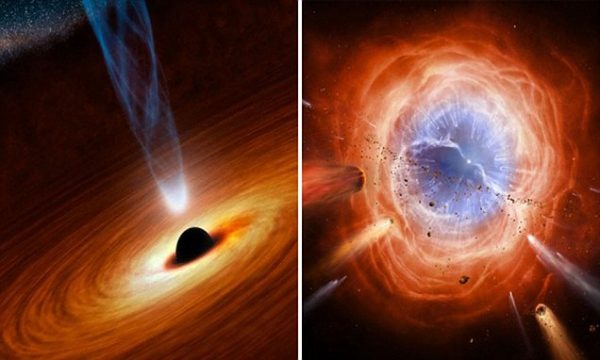Today, more and more people are questioning the holes in modern-day physics–as they rightly should. Those who are still not doing so, can be said to have not correlated all the data comprehensively or completely, because there are, in fact, many discrepancies in the mainstream scholastic viewpoints of “physics.” Nikola Tesla has been gaining in popularity, seemingly with the rise of internet research. While Tesla’s research is truly a necessary genius that needs to be further understood, this is an unfortunate example of this uncorrelated data. To the general public who understands Tesla as the unsung revolutionary in modern physics, there are too few who actually know what his scientific material, and theories represented–because if they did, there would be a great deal more collegiate discussion of the outright dogmatic approach to physics today. However, to be fair, there are a vast number of accredited researchers who have actually looked into Tesla’s (and other physicists) research, detailed it for modern audiences, and have even taken it a step further and advanced many of his technologies and applied theories.
Physics, like all of what could be considered as “mainstream science” (categorized by institutionalized funding of questionable merit, and equally questionable hypotheses) is constrained by a sense of dogma. This dogma creates a multifaceted, and entirely different conversation, but suffice it to say that it is one of a limited materialist mentality–to put it into simplified terms. Interesting avenues of research into the radically shifting paradigm of physics today, is Michael Talbot and other researchers who elaborate on the “Holographic Universe” model, as well as theoretical physicist, Peter J. Carroll, and even more-known physicist, Jaques Vallee, just to name a few.
In terms of understanding physics objectively, and separate from the materialist dogma that it largely represents today, a primary barrier would be the understanding of the prerequisite foundations of the universe, which many have considered “the big bang theory” as the answer to. However, while it would be incorrect to make a whole-sale statement and say that all the science behind this theory is false, an understanding outside of the dogma of physics quickly reveals a variety of holes in the theory. Essentially, it represents an incomplete model, much like Einstein’s theories relating to relativity, and a much deeper contextual analysis of the theories and the science behind them is needed, so as to assemble the larger coherent picture. String theory today remains an ideology in this category, not representing entire fallacy, but representing an incomplete and ultimately incomprehensive perspective of the data it is seeking to research. This incomprehension is not exactly due to a secret group of mad scientists, twisting the data as they see fit, but rather represents the idea that some of the axiomatic postulations taken for granted in modern physics may be, and some in fact are, incorrect.
Taking the big bang theory as an example for a thought experiment on the dogma of physics, independent researcher Clif High, of HalfPastHuman.com, has introduced what he calls the “little bloop theory,” as an answer to some of the misconceptions of the big bang theory. Clif High did not get a degree in physics, so take his theory for what you will, but he is a comprehensive linguist, computer programmer, and researcher, so his background is established, and the level of data involved in his theory is well worth a look, even if for nothing more than to disprove it.
High’s lecture on the theory can be seen below:
For brevity, this article will leave out the detailed science involved here, and instead put forth a coherent explanation of the theory, so as to whet the appetite of the individual researcher. While High does not actually use the term once in his lecture, the researcher’s little bloop theory is such an interesting proposition because, in essence, it is chaos theory applied as a postulation for the causal mechanism of the universe. For those unfamiliar with chaos theory, an article written on the subject can be found here, and while the theory largely flat-lined in popularity after the ’90’s, it remains a bit of a mystery as to why, exactly. Chaos theory, as it stands, perhaps represents one of the most accurate methodological studies of the cause-and-effect chain energetic reaction that comprises the physical universe; ranging from application in chemistry, psychology, sociology, economics, population densities and various statistical analyses, computer and radio transmission technologies, and thermodynamics, just to name some. The theory can be most easily understood by considering a glass of water spilling onto the floor. How do the drops form in the seemingly random, unpredictable, “chaotic” way that it does? The answer, is simply that nothing is random, and that if traced far back enough, the seemingly “unpredictable” characteristics of the subject at hand can be traced back to the subject’s initial exposure conditions to the environment. In short, water figures out how to spill by engaging in a feedback loop with its environment, until the engagement (the spill) has been completed.
In terms of the little bloop theory, consider the beginning of the universe as the initial spill from the glass of water. On a mathematical level, the first water molecule that could technically be measured outside of the glass’ rim could be considered the beginning. This beginning is infinitesimal, seemingly insignificant, but again, on a mathematical, statistical level, this would be considered the beginning of a chain reaction–and this is not insignificant on an analytical level, by any means. From here, the initial conditions that put this first water molecule into motion, will engage in this feedback loop in the way described above, and in terms of the origin of the universe, this was a low-pulse frequency. Through the feedback loop represented by chaos theory, the frequency, aggregated its initial conditions, which compounded its growth trajectories.
This feedback loop is currently still pulsing throughout every aspect of the known universe, and is the assimilation of reality. Taking basic ideas from the big bang theory, the little bloop theory represents a unique, and possibly more comprehensive explanation as to why the universe does indeed expand, by taking a more multi-faceted and observation-based approach. A final interesting point, is that, if true, this theory would provide a massive link (if not the essential link) between ancient metaphysics and modern physics. As the parallels are becoming more recognized, the materialist dogma of physics denies any accurate assimilation of the corresponding ancient gnosis with modern gnosis. The little bloop, which pulses in a feedback loop continuously, is exactly what the Taoists of China would consider the Tao, which could be considered the all-pervasive metaphysical life-essence in all things–separate from the Self, and more like the winds that the Self rides. The Tao, known by many different names, is a recurring theme that is synonymous with many different occult philosophies, and can be considered in part as represented in the observer effect of quantum physics. This little bloop could also very well be interpreted as the ether in occult metaphysics, which was scientifically elaborated on in great detail by Nikola Tesla.
Overall, it is important to walk away with an open mind to the possibilities as they are empirically represented, because this is the only way that the discrepancies in modern science as represented by materialist dogma will ever be resolved. Ironically, it was Einstein who coined the famous quote,
“Problems cannot be solved with the same mindset that created them.”
Those who have taken the over-generalizations of metaphysics made by Einstein and his ilk to heart, would do well to take this piece of advice to heart as well. While people like Clif High, Peter Carroll, and Paul LaViolette, may not have all the answers, they are searching for them, and this is the only coherent first step that ultimately can be made.
Peter Carroll’s website: http://www.specularium.org/
Paul LaViolette’s website: http://starburstfound.org/
Jaque Vallee’s website: http://www.jacquesvallee.net/
Clif High’s website: http://halfpasthuman.com/
Nikola Tesla and Occult Ether Physics: http://www.bibliotecapleyades.net/tesla/occultether/occultether.htm




